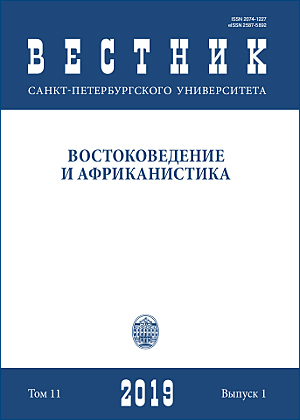“Baojuan of Five Spirits” as a source of folk beliefs in Suzhou city, Jiangsu, China
DOI:
https://doi.org/10.21638/spbu13.2019.108Abstract
This article analyzes connection between the Baojuan of Five Spirits originating from Changshu county (nowadays under jurisdiction of Suzhou city in Jiangsu province) with the local folk beliefs. This prosimetric text narrates the story of origins of Wutong (demonic deities of wealth) and their mother Tailao — a powerful local female deity. The Baojuan of Five Spirits is still commonly performed by professional storytellers in several areas of Suzhou, especially in Changshu, during the domestic assemblies honoring Wutong (Wusheng) or during believers’ pilgrimages to Mount Shangfang, a center of this cult in Suzhou. They have both auspicious and exorcistic functions. The Baojuan of Five Spirits is a unique source of folk beliefs that developed from the period of the 10th –12th centuries till the modern time. The author has used a unique manuscript of this text dating back to the beginning of the 20th century in the collection of Nanjing City Library with the complete title of the Baojuan of Five Spirits Guarding Peace (Wusheng bao an baojuan), which has not yet been discussed by scholars anywhere. It is one of the earliest extant recensions of this baojuan, but its contents are similar to those of modern variants of the Baojuan of Five Spirits, performed in Changshu. At the same time many details in this text can be traced to the fantastic novel Journey to the South (Nan you ji, late 16th — early 17th century). Current research reveals the connections between folk prosimetric literature, written sources, and folk rituals in China.
Keywords:
Chinese prosimetric literature, baojuan, Chinese folk beliefs, Wutong deities, folk ritual, fantastic novel
Downloads
References
Downloads
Published
How to Cite
Issue
Section
License
Articles of "Vestnik of Saint Petersburg University. Asian and African Studies" are open access distributed under the terms of the License Agreement with Saint Petersburg State University, which permits to the authors unrestricted distribution and self-archiving free of charge.





